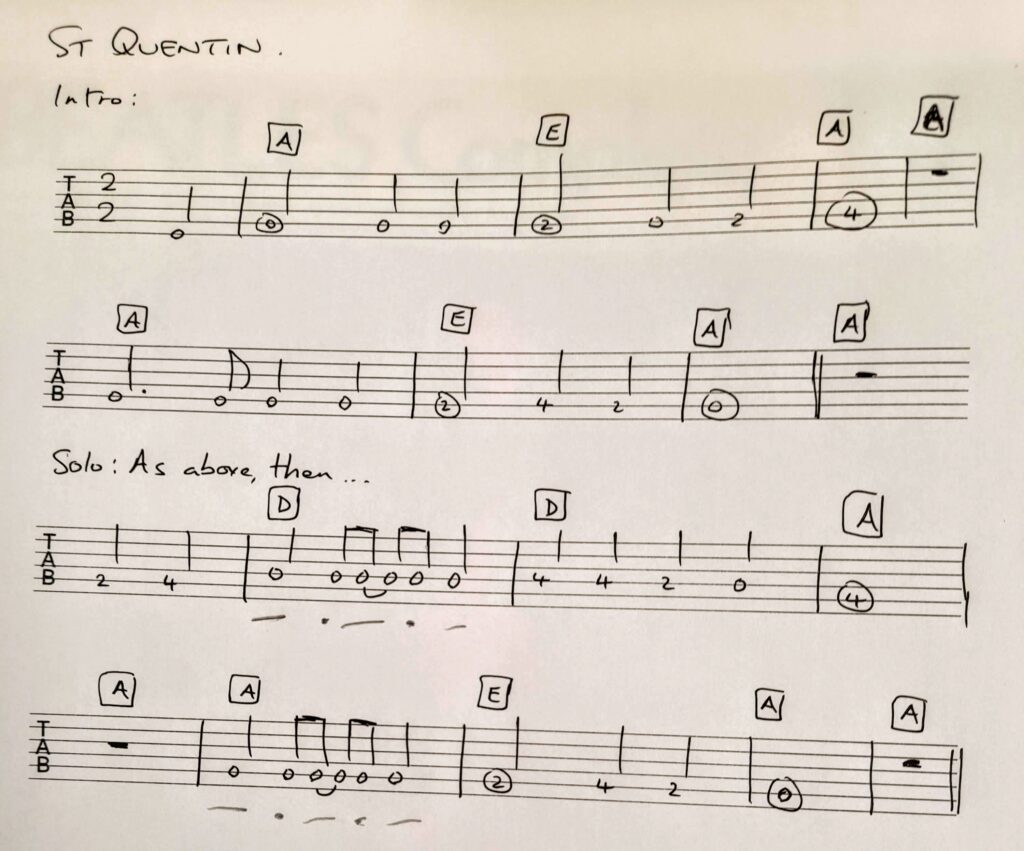The Problem(s)
It’s great, isn’t it, that you can download the chords and TABs for pretty much any popular song you can think of? There are loads of wonderful TABs websites, such as Ultimate Guitar, where users contribute their transcriptions of song accompaniments.
There are really two problems, though:
- Often the chords and TABs given are pretty inaccurate. This is a natural consequence of them being created by enthusiastic amateurs rather than pros. That said, even professionally published music scores are often littered with errors and/or the editorial decisions made in their production mean that the finished product doesn’t sound much like the original song.
- The TABs very rarely give any sense of rhythm. So, the reader is left completely in the dark about how long the notes last and whether or not there are gaps (rests) between them.
In this blog I’ll deal with the 2nd problem: how rhythmic elements can be incorporated into music written out as guitar tablature.
The Solution(s)
Sometimes people who write guitar TABs try to mark the underlying pulse / beat in some way so that the player knows when each note is supposed to occur in the bar. Often this means inserting barlines and then some sort of marker beneath each bar showing the crotchet and/or quaver pulse. I’ve seen lots of symbols used for this, but typically it’s an asterisk or + sign. But, this system still fails to show where notes are held and where there are rests in-between notes. I think a far better solution is to borrow rhythmic markings from traditional stave notation. Take a look at my transcription below of the guitar solo for Johnny Cash’s St Quentin:

Here things are much simpler. Below is an explanation of each of the markings:
- 1 beat notes (crotchets / quarter notes) = a fret number with a vertical stem going up or down from it.
- 2 beat notes (minims / half notes) = a fret number in a circle with a vertical stem.
- 4 beat notes (semibreves / whole notes) = a fret number in a circle.
- Half beat notes (quavers / eighth notes) = a fret number with a stem that is either beamed across horizontally to another quaver next door, or with a curved ‘flag’ hanging from it.
- For any dotted notes we simply add a dot to the right of the fret number.
- All rests are marked in the usual way.
- Time signatures and barlines are included as they would be in stave notation.
- Chords are given above the note where that chord change occurs.
The only possible downside to this system for those people who are used to reading stave notation is that a crotchet played on the open string could be mistaken for a minim (because the fret number looks rather like the empty head of a half note). But, once you get used to this things are much simpler and clearer.
If only we could go through the many thousands of TABs available on the internet and edit them so that this system was applied…! In the meantime, I do them one by one as I need them!
Share this page: